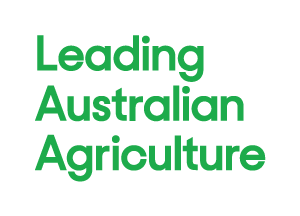The National Farmers Federation (NFF) is reminding all growers to take care to minimise the impacts of drift during this summer spraying season.
“Farmers need to remind themselves that their actions may inadvertently affect their neighbours as well as the broader agricultural community,” Cowra grower and NFF Farming Systems Committee Chair Chris Groves said.
“This season we are seeing the need for a chemical application to fallow paddocks due to the early summer rainfall in most cropping areas.
“This practice allows cropping operators to conserve moisture and limit nutrient usage by weeds.”
Mr Groves has called on spray unit operators to be aware of inversion layers in the atmosphere and their potential to carry fine spray droplets for many kilometres.
“When a drift occurs, sometimes damage can occur as far as 50-70kms down the road.
“Off-target damage causes losses to not only the affected producers; but has the potential to cause losses to whole communities.”
Nick Bryant of Grain Growers Limited, the peak body representing Australian grain farmers, said farmers had a range of online spray management tools at their disposal.
“GrainGrowers develops and supplies three very effective online spray management tools including SprayWise Decisions for Nufarm, Cotton Map for Cotton Australia and also ProductionWise.
“SprayWise Decisions provides hour-by-hour forecasts for spray conditions up to seven days in advance and in a choice of locations.
“Cotton Map, an initiative of Cotton Australia, Nufarm, Cotton Research and Development Corporation and Grains Research and Development Corporation and hosted by GrainGrowers, is available for free and identifies the location of nearby cotton fields while ProductionWise can plan and record specific spray applications on any chosen paddock,” Mr Bryant said.
Mr Groves said taking steps to minimise the risk of spray operations damaging neighbouing crops was just the right thing to do.
“We all need to look out for each other in the farming community and this is just one more way in which we need to help each other by being more conscious about how our actions can affect others.”
1. Know what to do
• Read and follow label instructions – it is a legal requirement.
• Ensure spray applicators are fully trained and accredited.
2. Check the conditions
• Monitor conditions before, during and after spraying.
• Do not spray when there is a surface temperature inversion – likely to occur between midnight and sunrise – or when wind speeds are very low.
3. Consider your neighbours
• Notify your neighbours of your spray plan.
• Check www.CottonMap.com.au for cotton fields that could be impacted by drift – spray droplets can travel further than 20kms.
4. Adjust your spray equipment
• Select nozzles that produce coarse or large droplets and use them in accordance with the manufacturer’s specifications.
• Minimise boom height when spraying and slow down – high speeds significantly increase potential for drift.
Links to useful sites and tools
• Summer Weed Control Best Practice Guide, 24 hour risk profile for summer spraying, and a video explaining the risk of temperature inversions: www.cottonaustralia.com.au
• CottonMap website: www.cottonmap.com.au
• Spraywise Decisions website: www.spraywisedecisions.com.au
• Grains Research and Development Corporation website: www.grdc.com.au
• CropLife: www.croplife.org.au/resources/programs/myagchemuse
You may also like
Fair Work Ombudsman goes MIA on ag businesses’ futures
The National Farmers’ Federation (NFF) is disappointed by the Fair Work Ombudsman’s (FWO) recent review into the definition of a “small business employer”, under the Fair Work Act. The review failed to deliver any...
New grants to help bush connectivity
The Regional Tech Hub has announced a new grants program, offering up to $3000 to community groups across rural, regional and remote Australia. The Connect Grants are open to grassroots projects that help people...
It was our biggest farmer rally; yet 40 years on we’re in the same battle
Opinion by David Jochinke, National Farmers’ Federation President Forty years ago today (July 1), 45,000 farmers packed their station wagons, fixed a few cheese sandwiches and sarsaparillas for the road, and...





Add comment